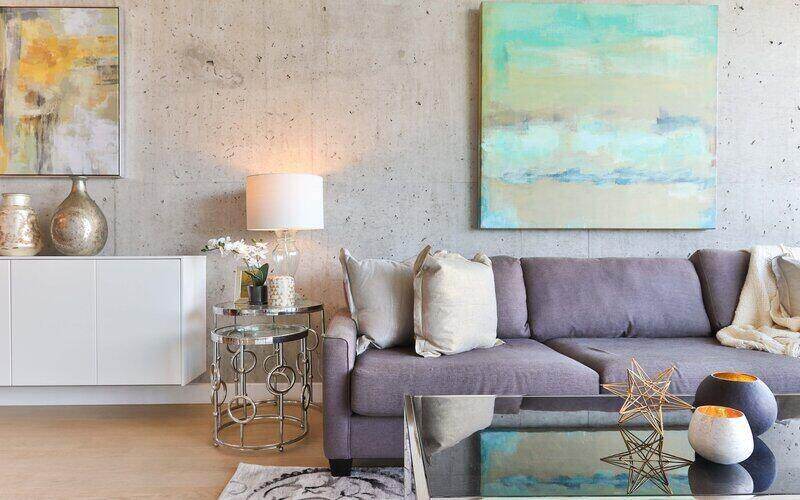In the Australian home lending market, owner-occupied home loans are available to borrowers who are going to live in the home they purchase using the property as security for their loan.
Owner-occupiers are seen as more reliable borrowers than investors and, as such, are routinely offered lower interest rates.
Owner-occupiers also account for the lion's share of home lending in Australia, fluctuating between roughly two-thirds to three-quarters of total new home lending in recent times, as you can see from the graph below.
Why does it matter if you're an owner-occupier?
If you're in the market for a home loan, you'll need to make it clear to your lender if you're going to be living in the property you're buying.
Across the market, so-called 'owner-occupier' home loans have consistently lower interest rates than investor home loans. As at As of July 2025, owner occupier loans feature interest rates from 4.74% p.a. versus 5.69% p.a. for investors
This is because lenders believe people who borrow to purchase their own homes are less likely to default on their loans compared to investors who are subject to fluctuations in rental markets, tenancy issues, and ongoing costs of maintaining an investment property.
Owner-occupiers are also less likely to sell their properties quickly. Sometimes this can result in a loss for the lender if the seller doesn't get the price needed to repay their loan in full. Lenders also prefer home loans to remain on their lending books for an extended time.
Beyond that, it also comes down to rules and regulations. Banks are required to keep more capital on their books for investor home loans compared to owner-occupier ones. Accordingly, banks and lenders are more likely pass on this cost through higher interest rates for investors.
What are lenders looking for
When you apply for an owner-occupier home loan, lenders will consider your ability to pay back the loan. This can be dictated by the size of your deposit, income, savings, assets, any existing debts you have, and the property itself.
See also: What is home loan serviceability and how is it calculated?
Often lenders will accept a smaller deposit for an owner-occupier home loan than an investment loan. The standard deposit is 20% of the property cost - or a loan-to-value ratio (LVR) of 80%.
A deposit less than 20% deposit usually means you will have to pay Lenders Mortgage Insurance (LMI), though this can depend on the policies of individual lenders.
See also: Which lenders offer low or no-cost LMI?
There may also be a few decisions to make in deciding which loan options are best for you.
Fixed vs Variable interest rates
On most owner-occupier loans, you will need to consider whether you choose a variable or fixed interest rate.
A variable rate home loan is where your interest rate will move (or 'vary') with changes to the market. This means your interest rate can rise or fall over the term of your loan.
A fixed interest rate home loan is a home loan with the option to lock in (or 'fix') your interest rate for a set period of time (usually between one and five years).
Both have their pros and cons, and it's important to do your own research or seek financial advice to see what will be best for your circumstances.
Fixed rates can result in considerable interest savings when market interest rates are rising but can lock borrowers into paying higher rates in a falling market.
As you can see, the proportion of fixed and variable rate home loans has varied considerably over recent years, largely according to borrower reactions to market conditions.
Principal & Interest vs Interest Only Payments
Another decision that owner-occupiers may have to face is whether to make principal & interest (P&I) or interest only (IO) repayments.
Typically, principal and interest repayments are recommended for owner-occupier home loans, meaning you pay the interest on the loan plus a slice off the principal (the amount borrowed) each time you make a repayment.
This leads to a faster reduction of the debt and also a faster accumulation of equity in the property.
Interest-only loans are generally more popular for investment home loans as it is the interest component only on investor loans than can be tax deductible. Interest-only repayments can also help investors manage cash flow and achieve shorter-term financial goals.
It's also worth noting interest-only repayments often attract a higher interest rate even though the initial loan repayments may be lower.
How to find a competitive owner-occupier home loan
The market is awash with owner-occupier home loans, which are essentially the bread and butter of the home lending market.
As well as finding a competitive interest rate, it's just as important to ensure the loan's terms, conditions, and features match your circumstances and financial goals.
Also keep an eye out for fees that may be attached to the loan. The loan's comparison rate will give you some idea.
You'll also want to find a lender with fast approval times, and if you have alternative streams of income or are self-employed, a loan that allows for this - potentially a low-doc home loan.
A mortgage broker may be able to help you find the best home loan product to fit your needs. Otherwise, you can do your research. Look at our lender reviews for more detailed information.
To get you started with comparing, the table below features some of the most competitive owner-occupier home loans currently on the market:
Lender Home Loan Interest Rate Comparison Rate* Monthly Repayment Repayment type Rate Type Offset Redraw Ongoing Fees Upfront Fees Max LVR Lump Sum Repayment Extra Repayments Split Loan Option Tags Features Link Compare Promoted Product Disclosure
Promoted
Disclosure
Promoted
Disclosure
Promoted
Disclosure
Disclosure
What if I want to move out of my owner-occupied home and rent it out?
There are any number of circumstances that could see you move from your owner-occupied property, including relocating for a new job or needing to upsize and deciding to put your home on the rental market.
If you are still paying the mortgage on your home and intend to put tenants in it, you must let your lender know of your changed circumstances.
This will see you to needing to refinance from an owner-occupier loan to an investor loan, which will likely come with a higher interest rate. (However, exemptions could apply if you employ what's called the absence rule, or the six-year capital gains tax (CGT) rule.)
The good news is it's relatively straightforward to switch from an owner-occupier to an investor home loan.
You can do this through your current lender, but it can also be a good opportunity to shop around for a lower interest rate or better loan terms on the wider market. Many lenders also offer inducements such as cashback offers, discounted interest rates, or add-on loan features to lure refinancers.
Failing to let your lender know you are no longer an owner-occupier of the property could see you charged with occupancy or mortgage fraud down the track. In simple terms, it is illegal not to inform the lender of your changed circumstances.
It's worth noting renting out a room in your home is a different matter - it shouldn't require a change to your loan as long as you remain living there. There may be tax considerations, however.
Do lenders check owner-occupancy?
Every lender will have different policies and procedures for checking whether you are an owner-occupier if they have reason to suspect you are not.
They may investigate whether you live at the property for the majority of the year or that you use the address in official documentation, such as your driver's license, or have the home's utility bills in your name.
They may also consider the proximity of the home from your workplace.
Bear in mind, your lender's assessment of 'owner-occupier' may not be the same as the Australian Taxation Office's definition of principal place of residence (PPOR) for tax purposes.
What happens if you rent out a property with an owner-occupier mortgage?
This involves lying to your lender, or withholding information, and if you're caught, you may face serious consequences.
One will be that the breach will likely be recorded on your credit history, meaning lenders may be wary of extending credit or approving you for a loan in the future.
Depending on the lender, your loan contract, and the extent of the deception, some lenders may move to recall the loan, giving you a deadline to pay off the balance owing or face having the lender repossess the property. You may also face criminal charges for fraud.
As you may have gathered, lenders don't take kindly to being misled.
More realistically, however, your lender will probably offer to move your loan to an investment one where you'll likely pay a higher interest rate and applicable internal refinancing fees.
Savings.com.au's two cents
There are a multitude of owner-occupier home loans on the market for those purchasing a home to live in. As well as a low interest rate, it's also important to consider the loan's terms and conditions, its features, and any fees that are attached.
If, down the track, you decide to put your home on the rental market, it's important to let your lender know you are no longer an owner-occupier. This will see you needing to switch to an investor loan while the property is rented out.
As with any home loan, while the standard loan term is generally 30 years, it pays to keep an eye on the home loan market to consider whether it's worth refinancing to another loan with a lower interest rate or better terms, conditions, or features that may suit your changing needs over time. The owner-occupier market is a highly competitive place with ever-evolving products.
First published on August 2021
Image by Josue Michel via Unsplash

Ready, Set, Buy!
Learn everything you need to know about buying property – from choosing the right property and home loan, to the purchasing process, tips to save money and more!
With bonus Q&A sheet and Crossword!







 Bea Garcia
Bea Garcia
 Denise Raward
Denise Raward
 Harry O'Sullivan
Harry O'Sullivan
 Rachel Horan
Rachel Horan


